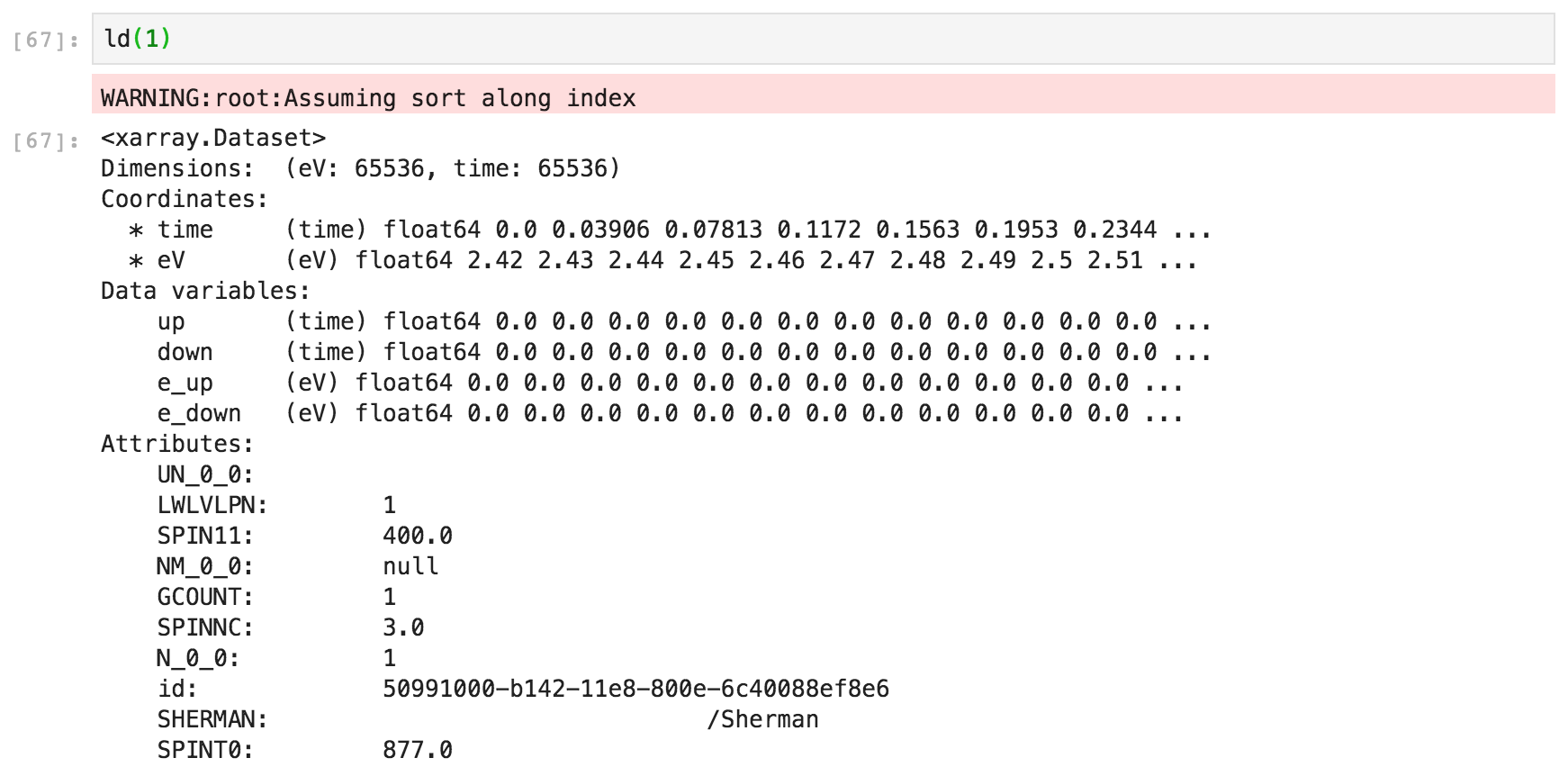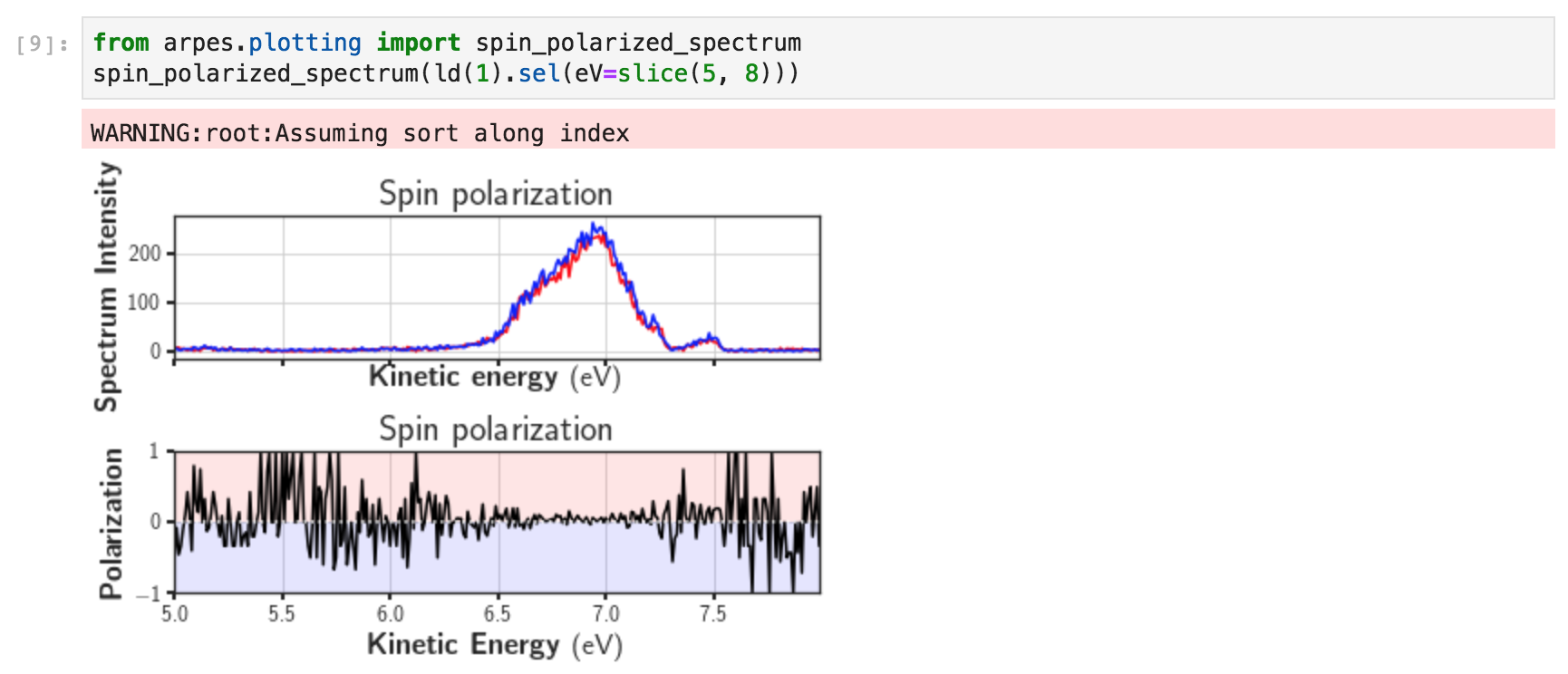Spin-ARPES¶
Spin-ARPES datasets tend to look a bit different than spin-integrated ARPES datasets. For one, they tend not to have as many dimensions as standard ARPES datasets, as many spin detectors only measure a single (k, E, S) point at a time, or might measure several components of S at once for single (k, E). Other detectors, like we one we have in the Lanzara lab, measure a single (k, S) point at once, but produce full EDCs.
Furthermore, SARPES datasets have the discrete spin label S. PyARPES
choice of xarray as our data primitive makes it excellently suited
for handling SARPES data, because the different spin channels can exist
simultaneously as xr.DataArrays on the same xr.Dataset.
Spin-ARPES conventions in PyARPES¶
Most functionality in PyARPES works just as well for SARPES as for other modalities. You can load data just as you would with any other type:

Loading SToF Data¶
Instead of having a spectrum data variable as we several: up,
down, t_up, and t_down. As we can see t_up and
t_down have time coordinates, while up and down have
energy coordinates. This spin spectrum comes from a time of flight
detector, so t_up and t_down are the raw timing spectra, while
up and down are the interpolated spectra after conversion to
kinetic energy.
You can think of up and down in the same way that spectrum
is treated for spin integrated datasets. All analysis code that operates
on xr.DataArrays should work for these as well.
Note for plugin writers: PyARPES reserves t_up, t_down,
up, down for the spin channels of ToF detectors and the spin
channels of energy-aware detectors respectively. You should ensure
plugins produce the appropriately variables. Spin-integrated time of
flight detectors should produce t_spectrum and spectrum, as
appropriate, not e_spectrum.
Plotting Spin-EDCs¶

Polarization Plot¶
Plotting multidimensional spin data using false color for the different spin components, an intensity-saturation/polarization-hue scheme, or by quiver plot is also straightforward.
Converting Time-of-Flight Data to Kinetic Energy¶
PyARPES contains support for converting time of flight photoemission data to energy and momentum space. Our support for this currently supports the Lanzara Lab’s Spin-ARPES spectrometer, but support is largely generic to multidimensional (ARToF) and PEEM-ToF detectors, given an associated data loading plugin.
Utilities can be found in arpes.preparation.tof_preparation.
Note about units: Be aware that the energy coordinates produced by conversion from ToF data are the electron kinetic energies. Because PyARPES is more concerned about axes having meaningful and consistent units, it does not distinguish between the binding and kinetic energy: both are labelled by ‘eV’. This has advantages, because analysis code will still work transparently on either type of data. You will apply a correction or offset to adjust units appropriately so that the chemical potential lies at zero binding energy.